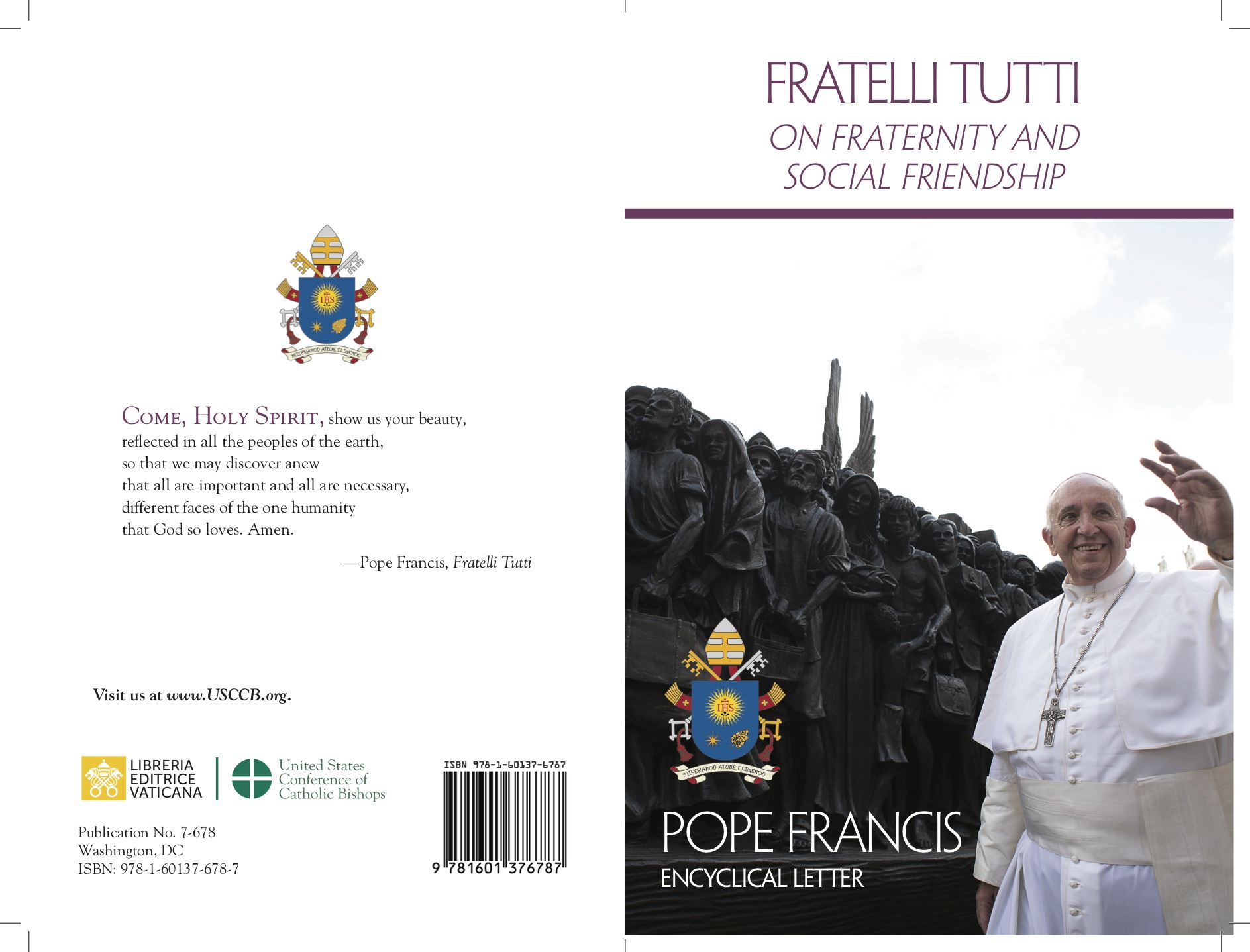
The Mass is over, but those assembled do not disperse. Following the nineteen nuns, the community of several dozen women and men of all ages moves to the open space in front of the church. Around them, the midday sun lights up the rice and maize fields of Viboldone, a district of San Giuliano Milanese. In recent decades, mechanization in farming has emptied the farmhouses. The ancient village has become ghostly. Only the “Domus” made of Lombard brick – the name given to the Abbey of the Benedictines of Saints Peter and Paul, one of the most important medieval complexes in Lombardy, and deliberately distinct from the grand monastic structures – remains to guard the entrance to the metropolitan Babel. Milan is just beyond, a few subway stops away. In this middle land between Lombardy and other worlds, the Domus offers the pilgrim a pause before immersing themselves in the urban frenzy. “How can we not ask ourselves, at the beginning of this 21st century, the meaning of this settlement on the outskirts of the great city?” wondered Cardinal Carlo Maria Martini, who found inspiration here for his first pastoral letter, The Contemplative Dimension of Life.
The key to the enigma lies with its custodians, the “women of the threshold”. The Benedictine Community that has inhabited it for over eighty years. The first thirty-five women arrived in the “north,” literally with cardboard suitcases, from Montefiolo, in the province of Rieti (central Italy), and from the catacombs of Santa Priscilla in Rome. They were led by Mother Maria Margherita Marchi, and they were determined, with the support of the Holy See, to create a new monastic community. Following their first steps, alongside the Benedictines of San Girolamo, was Aurelio Maria Escarrè, a young Spanish monk who had been exiled due to the Civil War. He would later become the abbot of Montserrat. They arrived in 1941, during the height of World War II. “It was the then Archbishop of Milan, Cardinal Alfredo Ildefonso Schuster, also a Benedictine, who, after initial surprise and doubt, wanted our presence here, in the Po Valley”, says Mother Maria Ignazia Angelini, a theologian and expert in spirituality, who served as abbess for twenty-three of the sixty years spent at Viboldone.
The community has aimed, from its very beginning, to reinterpret female monasticism from its origins in the contemporary context. It strives to update the rule in order to preserve its essence, drawing on the radical nature of the early Christian faith in the catacombs and the prophetic intuition of Benedict of Nursia, in order to give a soul to an era of crisis. In this effort, the nuns of Viboldone have been resolute in reinterpreting the grilles and the enclosure. “We wanted to be nuns like the monks. Therefore, we decided—in a time of upheaval—to present the Benedictine charism for women, focusing on serious work to support ourselves and care for the liturgy. First, we re-established a small printing press, which was what we had done in Rome. Then, in the 1970s, we started a workshop for the restoration of ancient books, which became the two main sources of income. This led the people of the village, who were down-to-earth folk, and whom were often distrustful of ecclesiastical institutions-, to recognize us as ordinary women. Like them, we too struggled to make ends meet; we were neighbors ready to share the little we had”.
In this simple exercise of evangelical freedom, the Viboldone nuns have reinterpreted not only the spirit of female monasticism but also the origins of the Umiliate of the 12th century, which is a spiritual renewal movement in tune with other expressions of the time, seeking reform of the Church. The Viboldone settlement (1176) gradually developed into two communities, of Umiliati (men) and Umiliate (women), who coexisted within the same living complex. The male and female settlements shared prayer and work, and lived in adjacent buildings. This was an experiment that was highly unusual for the time and it stirred some controversy, until it was officially recognized by Pope Innocent III. The movement’s trajectory ended with its dissolution in 1571. In the small communities scattered across much of northern Italy, Umiliate and Umiliati led a laborious and creative life.
“Principle that we have, in a way, embraced”, says Mother Maria Ignazia. “Along with the value of the feminine presence inscribed in the genius loci of Viboldone, of which the abbey, or rather the Domus, the main house of the Umiliati, offers an eloquent testimony. From the façade itself, where, between Saints Ambrose and Bernard (or Giovanni da Meda) in the lunette, and under the vigilant protection of the 'columns' Peter and Paul, the depiction of Maternity stands out”.
The image of the Madonna with the Child repeatedly appears inside the church, where the rhythm, along with touches of originality, gives the space an unusual style. “This is typical of the Umiliati, the synthesis of their spirituality where the rule does not suppress but highlights the imprint of individuality. A spirituality that is always open to innovation, inherent to human nature. A spirituality that is capable of valuing the feminine in this sense”. This is evident in the frescoes, where female figures are often depicted holding the Gospel. The Umiliate, just like their male companions, were recognized as dignified and therefore announce the Word.
“Look at Eve,” points out Mother Maria Ignazia, while indicating the roundel under the Crucifixion in the main cross vault. “Unlike traditional depictions, her hands are not hiding her face, in a sign of shame. On the contrary, she is raising her gaze to the Crucified One, and her flowing hair is lifted, free, in the wind, as if by the Breath flowing from the Redeemer”. Eve's profile and naked body exude the impulse of a freed liberty. The unprecedented posture emancipates her from the stereotype of the guilty one, the confessed offender of human misfortune, to restore her dignity as “mother of the living”.
“Facing the slumped head of the dying Christ, she reveals herself as the first recipient of His Spirit, and a witness to Grace”. What is noteworthy is the juxtaposition of the Annunciation—depicted in the vault above the Crucifixion—which powerfully suggests that the body of the Word of God, incarnate in Mary's womb, the fragile flesh of the Crucified, is that of the Resurrected. Every detail in this abbey is eloquent. Thus, the cascading frescoes of the Domus narrate a theology of women in figurative form.
Over eight hundred years later, the current community,—with the abbey having passed to the Olivetans first, and then to the noble Castelbarco Albani family—took up the batten. Viboldone is not a world apart, a bubble of spirituality reserved for a few privileged ones, a relic of the past. Its different way of being in the world is at the service of human pilgrims who can encounter it. With their various requests, be that advice, an outlet, a listening ear, a moment of silence. The silence of the abbey generates words capable of holding back tears and sobs, or even just embracing them for a moment.
“Friendship, a welcome, and hospitality require time,” emphasizes Mother Maria Ignazia. “And here we try to fight against anxiety and haste. In search, fully trusting in the Living God. I do not know if it is for this reason. However, in our conversations, people manage to articulate the sometimes unbearable pain they carry inside. Recently—a strong example—a young mother came to us. Her baby had died just three days after she had given birth. I cannot imagine anything more terrible than bringing life into death. Her disconsolate cry was one of deep sorrow, and I cried with her: what else could we do but share the absurd, with unspeakable hope? She left, mixing tears and a smile... In reality, I did nothing: simply cried with her: I stood by her”.
The secret, perhaps, lies in the selfless gift of time, in the “waste” of involvement—not without a horizon. The power of gratuitousness.
Don Luisito Bianchi, who was a working-class priest, partisan, poet and historical friend who served as chaplain of the abbey, wrote comparing its gratuitousness to the essence of the onion. “To find it, you have to peel its remains, one by one, cry at the smell it gives off and, having arrived at the last two, put them there in imitation of joined hands, that is, the germ that will give new onions and, therefore, aphoras for new gratuitousness. Separating them, if you can, to see what they contain, what do you find? Nada. Todo”.
Many people come every day to the community, mostly from Milan and the surrounding areas. They arrive for the pilgrim paths. They ring the bell, certain that someone will open the door and sit with them in one of the dimly lit rooms on the first floor, ready to listen. There is always a nun on duty for the meetings, which are often unplanned. From the Umiliati and Umiliate, the Benedictines have inherited the generative openness to the unexpected, a distinctive feature of existence.
“It’s our unique way of reinterpreting the charism so that it remains alive and is not reduced to a mere museum relic. Benedict taught us that life gives its best when it finds its rhythm and its pauses of silence. Often we do not notice this because it remains in the background of the piece. Without this background, however, there can be no melody, with its clusters of single, peculiar, unique notes”. The rule, the cycle, repetition, and exception. The music of life and the living, in balance between rooting on earth and opening to the infinite. Perpetually on the threshold.
by Lucia Capuzzi
A Journalist with the Italian national newspaper, “Avvenire”
Meditations by Mother Angelini
In 2023, at the request of Pope Francis, Mother Maria Ignazia Angelini led spiritual meditations during the retreat for the members of the Synod on Synodality. These texts, along with the reflections of the Benedictine nun delivered during the synodal discussions, are collected in the volume La memoria genera future [Memory Generates the Future], published by the Vatican Publishing House. The preface is by Cardinal Mario Grech, Secretary General of the General Secretariat of the Synod.













 Purchase the Encyclical here Fratelli Tutti
Purchase the Encyclical here Fratelli Tutti
